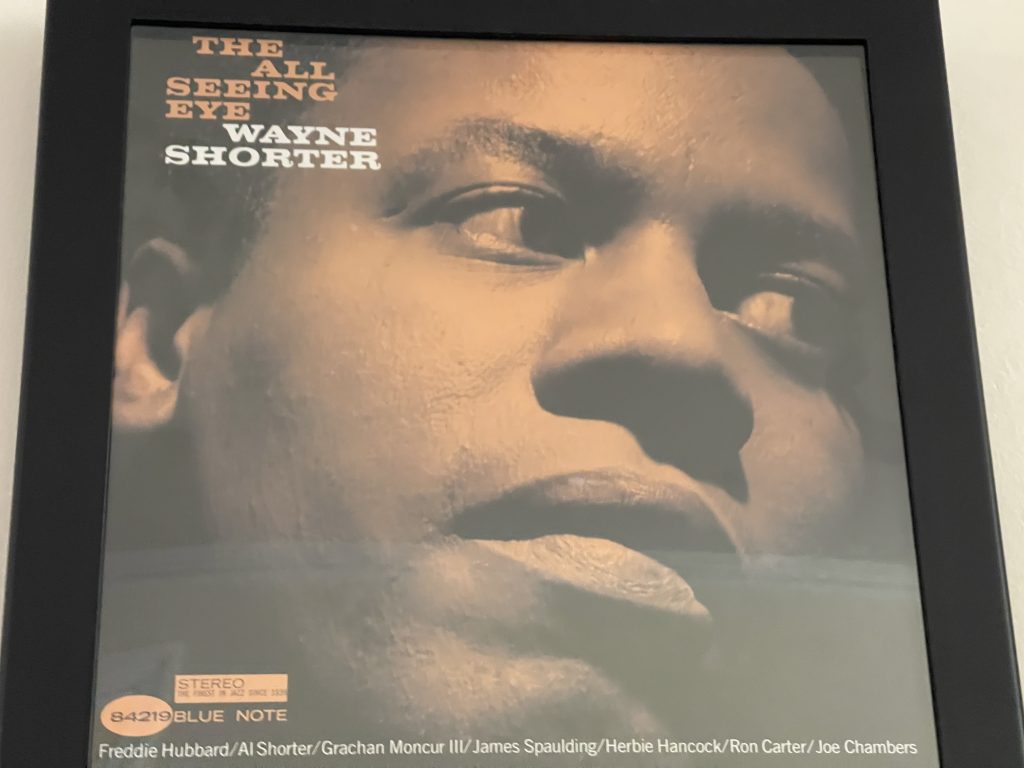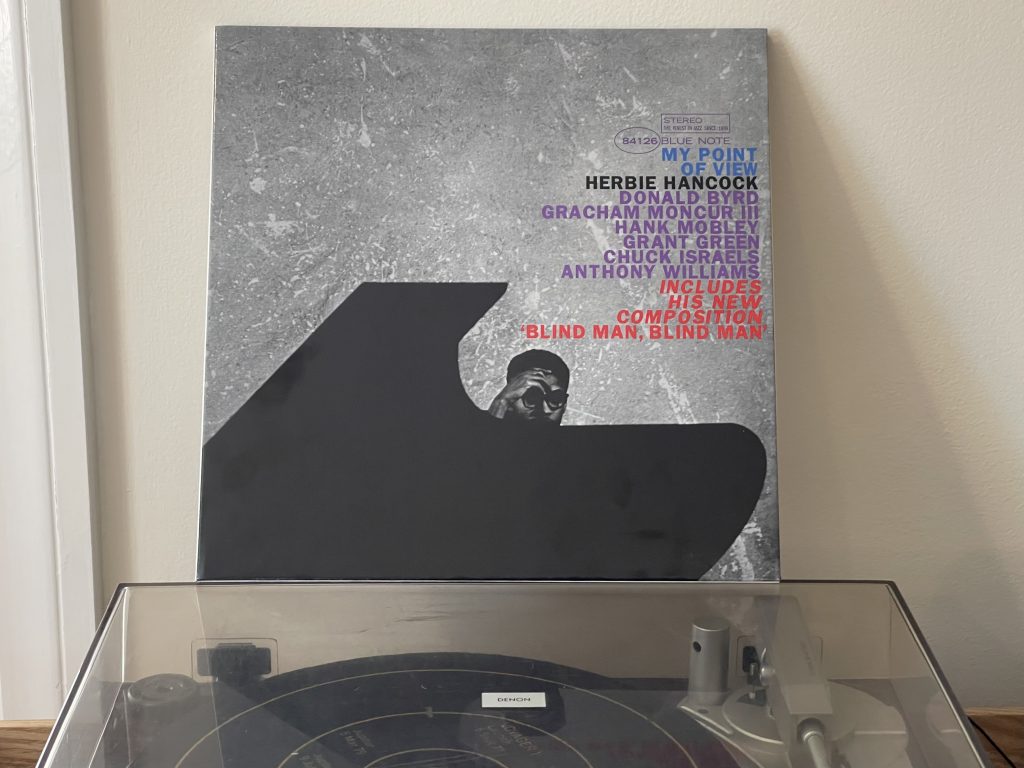
Album of the Week, June 25, 2022.
As 1965 ran on, Miles Davis continued with health problems and personal setbacks. His hip replacement in April had failed, but he checked himself out of the hospital due to boredom in July. In August he was back in the hospital for another go at the hip replacement, this time with a plastic ball joint. The band continued recording, though. We’ve listened to Hancock’s Maiden Voyage. Tony Williams recorded his debut solo album Spring in August with Wayne Shorter and Hancock alongside. And Shorter recorded The Soothsayer in March, The Collector in June, and recorded the Lee Morgan album The Gigolo with his old Jazz Messengers bandmate in June and July. And in October, Shorter returned to Van Gelder Studio in Englewood Cliffs, New Jersey with an octet to record his next album, The All Seeing Eye.
To say that this new album was a radical departure from what came before is accurate, and might understate how dramatic a development this was for Shorter the composer. Not only was this the largest group he had ever written for — with Herbie Hancock, Ron Carter and Freddie Hubbard returning from Speak No Evil, and now augmented by trombonist Grachan Moncur III, alto sax James Spaulding, drummer Joe Chambers, and Shorter’s brother Alan composing and playing flugelhorn on the final track — but compositionally this was far from the normal territory he covered. Even coming after some of the danker tracks on E.S.P. we are in new territory here. There is little of the blues or standards jazz on this album. We teeter over the abyss.
Shorter meant this as a concept album, exploring the meaning of life and the existence of God and the Universe. It’s easy to hear a search for the divine in the title track, which opens the album. In some ways the tune here is the most conventional one on the album, but the thick chords take it to a completely different place. Hubbard has a blazing solo that Shorter picks up and carries forward. Hancock slows things back down with his solo and the band comes back at the end to close things down.
The opening track is wild, but nothing prepares the listener for the free opening to “Genesis,” which presents a full keyboard chromatic scale by Hancock that builds from the abyss to a modal statement of the theme, first in the piano, then continued in the horns. Coming out of the band’s opening statement, first Carter and then Shorter take their own free statement of the melody. Shorter builds to a rhythmic pattern that he repeats on a single note for four measures before Hancock picks up the pattern, while Shorter spins back out. Hubbard takes the next solo, keeping in free time while exploring different tones and octaves with his horn. Moncur slowly explores an ascending chromatic scale as the part of Creation that he surveys unfurls. At the end the main theme comes back with the chords from the horns, followed by the piano theme to bring the composition full circle. Twelve bar blues this ain’t.
“Chaos,” despite its title, is more conventional, albeit deep in modal jazz. Shorter has called this “what man has done… to God’s creation,” and the music reflects a deep tension, conflict and warring voices, all over the constant pulse of Carter and Chambers. First Shorter, then Hubbard and Hancock make fiery statements before the ensemble plays out the theme again and begin to spiral back out, ending the track in a rare fade-out.
“The Face of the Deep” is a relatively more conventional slow ballad, rendered fresh both by the dense voicing of the horn quartet on the theme and by Hancock’s contemplative solo, accompanied by sensitive work from Chambers on the cymbals and a slow heartbeat from Carter. As an aside, this record features some of Carter’s earliest use of the portamento that would eventually become one of his signature techniques. Shorter’s solo here is reminiscent of his work on “Infant Eyes,” with an approach as much about space as about his notes. The horns return after to restate the theme with an ominous swell that leads into the final track.
“Mephistopheles,” the sole composition by Alan Shorter on the album, seems at first puckish, with an angular melody in the horns that is played in clusters of notes. But then the rhythm section enters with an insistent ground played in the bass and piano accompanied by subtle cymbal work by Chambers, and the horns return with an ominous restatement of the theme followed by a scream. Shorter picks up the solo over rolling drumwork and that continuing ground, sketching a portrait of an uneven, unpredictable ruler of the underworld. His brother follows with a flugelhorn solo that continues the exploration of the Hadean region, playing against stabbing chords in the piano as he circles the melody, raising it higher and then descending back into the pit. Moncur gets the last word from the horns, with a solo that reflects less fire and more heat, taking the persistent beat of the ground and adopting it for his own descending solo. Chambers takes the ground and double times it for his own solo, then breaks free of the boundaries of the bars before returning to the ground beneath the horns who restate the melody once more, finishing with a final scream.
Shorter would explore many more boundaries of music, both with his solo recordings and his work with the Miles Davis Quintet, but The All Seeing Eye stands as a conceptual milestone in his catalog, both forbidding in its thorny complexity and inspiring in its dark beauty. It was not a permanent change of direction, and next time we’ll explore yet another side of him as a composer and sideman alongside another of his Art Blakey bandmates.
My copy of the record (top) is the recent Tone Poet reissue from Blue Note, which sounds superb. You can listen to the full album here.

